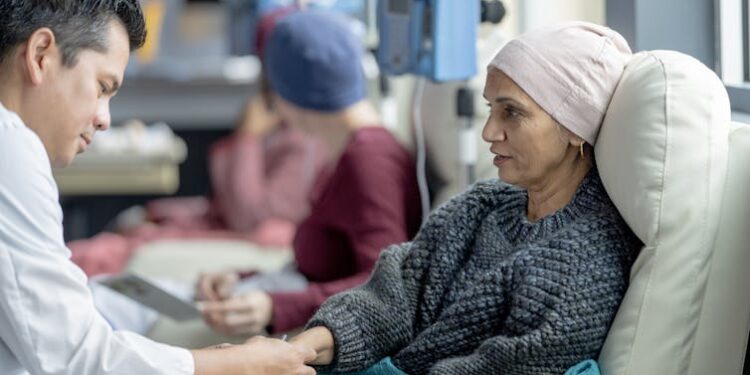In May 2025, the White House proposed reducing the budget of the National Institutes of Health by roughly 40% – from about US$48 billion to $27 billion. Such a move would return NIH funding to levels last seen in 2007. Since NIH budget records began in 1938, NIH has seen only one previous double-digit cut: a 12% reduction in 1952.
Congress is now tasked with finalizing the budget ahead of the new fiscal year, which begins Oct. 1. In July, the Senate rejected the White House’s proposed cuts and instead advanced a modest increase. And in early September, the House of Representatives also supported a budget that maintains the agency’s current funding levels.
However, talk of cutting NIH funding is not a new development. Such proposals tend to resurface from time to time, and the ongoing discussion has created uncertainty about the stability of research overall and prompted concern among scientists about the future of their work.
As researchers studying complex health policy systems – and specifically, science funding policy – we see the NIH as one node in an interconnected system that supports the discovery of new knowledge, trains the biomedical workforce and makes possible medical and public health advances across the U.S.
Our research shows that while cutting NIH funding may appear to save money in the short term, it can trigger a chain of effects that increase long-term health care costs and slow the development of new treatments and public health solutions over time.
Table of Contents
Seeing the bigger picture of NIH funding
NIH funding does not just support the work of individual researchers and laboratories. It shapes the foundation of American science and health care by training scientists, supporting preventive health research and creating the knowledge that biomedical companies can later build into new products.
To understand how funding cuts may affect scientific progress, the training of new researchers and the availability of new treatments, we took a broad look at existing evidence. We reviewed studies and data that connect NIH funding, or biomedical research more generally, to outcomes such as innovation, workforce development and public health.
In a study published in July 2025, we built a simple framework to show how changes in one part of the system – research grants, for example – can lead to changes in others, like fewer training opportunities or slower development of new therapies.
Eroding the basic research foundation
The NIH funds early-stage research that lacks immediate commercial value but provides the building blocks for future innovations. This includes projects that map disease pathways, develop new laboratory methods or collect large datasets that researchers use for decades.
For example, NIH-supported research in the 1950s identified cholesterol and its role in disease pathways for heart disease, helping to lay the groundwork for the later discovery of statins used by millions of people to lower cholesterol levels. Cancer biology research in the 1960s led to the discovery of cisplatin, a chemotherapy prescribed to 10% to 20% of cancer patients. Basic research in the 1980s on how the kidneys handle sugar helped pave the way for a new class of drugs for Type 2 diabetes, some of which are also used for weight management. Diabetes affects about 38 million Americans, and obesity affects more than 40% of the adults in the U.S.
FatCamera/E+ via Getty Images
Without this kind of public, taxpayer-funded investment, many foundational projects would never begin, because private firms rarely take on work with long timelines or unclear profits. Our study did not estimate dollar amounts, but the evidence we reviewed shows that when public research slows, downstream innovation and economic benefits are also delayed. That can mean fewer new treatments, slower adoption of cost-saving technologies and reduced growth in industries that depend on scientific advances.
Reducing the scientific workforce
By providing grants that support students, postdoctoral researchers and early-career investigators, along with the labs and facilities where they train, the NIH also plays a central role in preparing up-and-coming scientists.
When funding is cut, fewer positions are available and some labs face closure. This can discourage young researchers from entering or staying in the field. The effect extends beyond academic research. Some NIH-trained scientists later move into biotechnology, medical device companies and data science roles. A weaker training system today means fewer skilled professionals across the broader economy tomorrow.
For example, NIH programs have produced not only academic researchers but also engineers and analysts who now work on immune therapies, brain-computer interfaces, diagnostics and AI-driven tools, as well as other technologies in startups and in more established biotech and pharmaceutical companies.
If those training opportunities shrink, biotech and pharmaceutical industries may have less access to talent. A weakened NIH-supported workforce may also risk eroding U.S. global competitiveness, even in the private sector.
Innovation shifts toward narrow markets
Public and private investment serve different purposes. NIH funding often reduces scientific risk by advancing projects to a stage where companies can invest with greater confidence. Past examples include support for imaging physics that led to MRI and PET scans and early materials science research that enabled modern prosthetics.
Our research highlights the fact that when public investment recedes, companies tend to focus on products with clearer near-term returns. That may tilt innovation toward specialty drugs or technologies with high launch prices and away from improvements that serve broader needs, such as more effective use of existing therapies or widely accessible diagnostics.
Tunvarat Pruksachat/Moment via Getty Images
Some cancer drugs, for instance, relied heavily on NIH-supported basic science discoveries in cell biology and clinical trial design. Independent studies have documented that without this early publicly supported work, development timelines lengthen and costs increase, which can translate into higher prices for patients and health systems. When public funding shrinks and companies shift toward expensive products instead of lower-cost improvements, overall health spending can rise.
What looks like a budget saving in the near term can therefore have the opposite effect, with government programs such as Medicare and Medicaid ultimately shouldering higher costs.
Prevention and public health are sidelined
NIH is also a major funder of research aimed at promoting health and preventing disease. This includes studies on nutrition, chronic diseases, maternal health and environmental exposures such as lead or air pollution.
These projects often improve health long before disease becomes severe, but they rarely attract private investment because their benefits unfold gradually and do not translate into direct profits.
Delaying or canceling prevention research can result in higher costs later, as more people require intensive treatment for conditions that could have been avoided or managed earlier. For example, decades of observation in the Framingham Heart Study shaped treatment guidelines for risk factors such as high blood pressure and heart rhythm disorders. Now this cornerstone of prevention helps to avert heart attacks and strokes, which are far more risky and costly to treat.
A broader shift in direction?
Beyond these specific areas, the larger issue is how the U.S. will choose to support science and medical research going forward. For decades, public investment has enabled researchers to take on difficult questions and conduct decades-long studies. This support has contributed to advances ranging from psychosocial therapies for depression to surgical methods for liver transplants that do not fit neatly into market priorities, unlike drugs or devices.
If government support weakens, medical and health research may become more dependent on commercial markets and philanthropic donors. That can narrow the kinds of problems studied and limit flexibility to respond to urgent needs such as emerging infections or climate-related health risks.
Countries that sustain public investment may also gain an edge by attracting top researchers and setting global standards for new technologies.
On the other hand, once opportunities are lost and talent is dispersed, rebuilding takes far more time and resources.
























